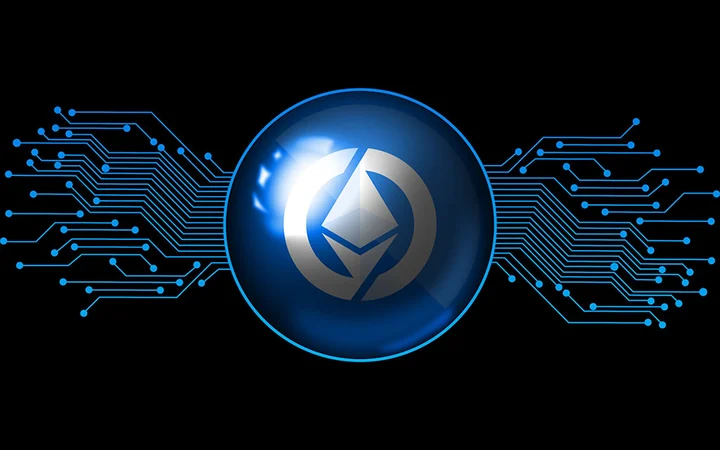IOSG EigenLayer reshaping returns – the model and returns of re-staking
IOSG EigenLayer Reshaping Returns - The Model and Returns of Re-stakingEigenLayer provides a new way of understanding network security called “Re-staking”. It can protect the security of multiple networks without the need for startup capital. It offers 32,767 possible strategies that can provide higher yields of up to 12-15%, including Ion Protocol, Renzo, Rio, Puffer Finance, Inception LRT, and Swell, among others. It also ensures a low-risk positive feedback loop to maximize liquidity. In the future, only protocols focused on developing this market have the potential to succeed.
Original author: Siddharth Rao
Original source: IOSG Ventures
Re-staking with EigenLayer
- Binance’s new CEO’s first AMA Priorities, Listing Coins, and Future Journey
- The Bear Market Russian Crypto Traders on the Decline, Confirms Central Bank
- Hot Takes Unveiling the 3 Must-Have Scandal Coins for Savvy Investors!
About a year ago, EigenLayer embarked on a journey to help understand the new paradigm of network security with the introduction of the concept of “Re-staking”. In essence, ETH validators can now protect the security of multiple networks, including base layers like DA, compute networks, as well as middleware like shared sequencers. Essentially, any network requires some form of consensus without the need for startup capital to ensure security. These networks are called Actively Validated Services (AVS) on EigenLayer.
Without EigenLayer, any operator wanting to run a system like DA would need to invest in relevant hardware and make an initial stake. This forces projects that require a validator set to issue tokens at very high (sometimes unreasonable) valuations to secure high inflationary rewards. This can lead to large-scale speculative sell-offs, which is detrimental for validator operators.
While there is indeed the risk of leverage liquidation with a single operator, there will always be validators performing well who would want to earn some extra rewards through this.
EigenLayer allows for local re-staking of Ethereum for AVS network security by creating EigenPods or using similar liquid staking tokens (LSTs) such as stETH, rETH, and cbETH. Anyone holding LSTs effectively becomes a participant in Ethereum security and decentralization, earning rewards from the Ethereum network. Further staking of the LST tokens provides security to AVS networks in exchange for AVS returns. Therefore, LST re-stakers will be eligible for network rewards (minus operator fees).
If staking and re-staking are beneficial, then why is it liquid?
If you believe in the liquid staking of Ethereum, then you would also appreciate the concept of liquid re-staking. Liquid staking in Ethereum involves two parties: Lido and retail participants. Retail participants may say, “I don’t have enough ETH, hardware, or time to operate a validator, but I want to earn higher returns on my ETH.” The staking company would say, “I can help you with that; I charge a portion of the returns as operating fees and do it in a fully transparent manner.”
This eliminates five expenses for the public: hardware costs, hardware maintenance, time, energy, and mental space.
For EigenLayer, in addition to the aforementioned expenses, there are additional delegation expenses. In Ethereum, each node operated by an operator is “interchangeable,” meaning that the network sees each node as the same, whether it is running on bare-metal infrastructure, the cloud, or elsewhere.
For EigenLayer, there is a network that serves to secure other networks, and each operator in the network can choose which other networks they want to verify. This essentially means that there are no two operators that are the same. Therefore, experienced teams or associations wisely choose operators with good strategies to address the concerns of retail participants.
“Liquid” Section
There are opportunities throughout the year to earn ETH returns higher than any staking protocol on Ethereum.

If you only focus on returns, there are about 1,748 ways to earn higher returns on your ETH.
The real value lies in the almost “risk-free” return rate, which refers to earning ETH in the least risky way. For liquid tokens, the lower the risk, the greater the likelihood of LST being included in other protocols, the stronger the combination, and the greater the demand for LST. It all starts with trust, the lowest risk.
For LST, risk assessment is not that difficult. You have risk based on operators (operator shutting down validators, operator quality, hardware quality, etc.) and risk based on the network (smart contract risk). The consensus mechanism for all risks is the same, and the minimum hardware requirements for all operators are the same.
In re-staking, there are more factors to consider, mainly including hardware requirements (whether expansion is needed), AVS security audits, real-world testing of new consensus mechanisms, the economic model of AVS itself, and the types of supporters (investors, partners, etc.) that AVS has, etc., as well as smaller factors such as the types of supporters (investors, partners) that AVS has. Just the 15 AVS running on EigenLayer alone have 32,767 possible strategies. We cannot expect retail investors to make educationally significant decisions.
Retail participants won’t do this, and if they simply mimic any operator’s strategy and are slashed, it will lead to a loss of trust and affect the network’s liquidity. If operators launch their own LST, it will result in excessive fragmentation or excessive concentration of staking in the early stages. Even if multiple operators use the same strategy but have different Liquid “re-staking” tokens (LRTs), it will also lead to unnecessary fragmentation. A unified strategy and decentralized operators with a common LRT are crucial to EigenLayer’s success.
This ensures a “lowest risk” positive feedback loop, which can be seen as:
Best risk management → more liquidity → more whitelisted → more usage → more liquidity → more popular → lowest risk
The reason it is the lowest risk is because the risk of having 1 ETH liquidated from 100,000 validators is much smaller than the risk of losing 1 ETH from 1 validator. That’s why people still choose to stake with Lido. Lido recently went through a liquidation event, where over 20 validators were liquidated for approximately 1.1 ETH each (a total of around 20 ETH). Although their infrastructure partners absorbed the losses, it is negligible compared to Lido’s 8.83 million staked ETH. This demonstrates the importance of having reliable partners.
How does liquidity staking work?

Users send their LSTs/ETH to the fund pool contract of the liquidity staking platform. Stakers receive an equivalent amount of LRT (Liquidity Re-staking Tokens). Then, the contract allocates these tokens to the strategy management contract in the EigenLayer protocol. The strategy management contract delegates these tokens to node operators and ensures they adhere to the strategy. Governance of LRT can choose specific strategies. The operators validate the underlying AVS and retain a portion of the rewards. The rest is then transferred to the LRT protocol, which extracts a portion and ultimately distributes the remainder to the stakers. This is evidently more extractive than LST (Liquidity Staking Tokens), but it requires more resources for work and maintenance.
How attractive are the returns?
We do not know how the AVS (Active Verification Service) incentives will be allocated, nor do we know how each consensus mechanism will operate. But based on some basic mathematical calculations, here are several possible scenarios for calculating the EigenLayer returns that can serve as a reference.
Considering the Fully Diluted Valuation (FDV) scenario, with reference to the last known FDV data of the referenced project tokens, the tokens of those projects may launch at higher valuations, making the returns significantly more attractive. As a conservative estimate, we assume the FDV values of all the partners announced on the EigenLayer ecosystem page are their last round of fundraising valuations. As of October 19th, the Total Value Locked (TVL) of EigenLayer is approximately 172k ETH, and Lido’s base yield is around 3%. According to our calculations, there is approximately $62 million in emissions (both influenced by the TGE price and emissions), which roughly equals an average enhanced APY of 9%, potentially totaling 12%.
In a more aggressive scenario, the boosted APY of returns could reach up to 15%. Of course, these are based on assumptions, and if you want to discuss the detailed calculation methods, you can DM me on Twitter (@Rao_Sidd).
LRT Ecosystem
-
Ion Protocol: A lending protocol that allows borrowing of assets using LSTs (Liquid Staking Tokens) and LRTs (Liquid Restaking Tokens);
-
Renzo: A platform specializing in liquidity restaking. It accepts all EL LSTs (EigenLayer Liquid Staking Tokens) and ETH in exchange for their LRT ezETH (Liquid Restaking Token ezETH);
-
Rio: A platform specializing in liquidity restaking. It accepts all EL LSTs and ETH in exchange for the platform’s LRT reETH;
-
Puffer Finance: An LRT protocol based on DVT;
-
Inception LRT: An LRT protocol focused on ensuring the security of L2s;
-
Swell: An LST protocol that is also creating its own LRT. Swell’s LST is also listed as a candidate in the JokerAce competition of EigenLayer restaking;
-
Stader Labs: Stader Labs also has its own LST ETHx and is creating its own LRT;
-
Genesis LRT: Offers customized LRTs, allowing each client to create their own LRT based on their desired risk configuration, primarily targeting large clients and institutions entering this field;
-
Astrid Finance: Uses a rebase model, where users receive rstETH, rrETH, or rcbETH based on the content staked in the liquidity pool and the user’s balance. As rewards accumulate, the user’s balance automatically adjusts;
-
KelpDAO: Similar model as Renzo and Rio;
-
Ether.Fi: Allows users to deposit only ETH into the liquidity pool in exchange for the platform’s LRT eETH.
How might the future of this space evolve?
In this space, to become a true winner, it all starts with building the highest trust. LRTs will also follow the same positive feedback loop as LSTs. Risk management is the most important factor in attracting restakers, liquidity providers, and partners.
At some point in the future (timeline uncertain), the returns may be slightly higher than those of ETH, but this will depend on the design and usage of the underlying AVS’s economic model. The use of AVS, or the combination of Ethereum’s consensus rewards and AVS yield, could become the choice for users to achieve the lowest-risk returns on Ethereum.
Mantle recently staked 40,000 ETH from BitDAO’s funds to Lido, which means they will soon have a significant amount of stETH, potentially listed on Mantle and partly restaked on EigenLayer (as the supply limit of LST increases). For example, if Mantle chooses to use EigenDA as the DA layer, they would heavily lean towards the lowest-risk strategy, as these AVS both protect the treasury and support Mantle’s overall strategy and goals.
Mantle can also incentivize the use of their platform’s LST: mntETH and establish corresponding LRTs (liquidity restaking tokens). This will help Mantle efficiently utilize their funds while helping ensure the security of their promised DA layer. The earned fees can be given back to their users as gas refunds.
Due to the competitive environment, power-law will play a certain role (the market tends to be dominated by a “winner-takes-all” pattern), and the top 1-2 protocols may ultimately control 80-90% of the market. I believe that only those protocols that are completely focused on developing this market have a chance to come out on top, as this market requires a high level of concentrated investment. There is also a possibility that some large LST protocols may integrate upstream into the supply chain, similar to what Swell did, but currently there are no further signs of that.
It is crucial for the LRT protocol to be available on the market from day one. The retail market’s greatest trust comes from TVL (Total Value Locked). Projects that are able to attract good TVL on the first or second day of EigenLayer’s launch may become future leaders.
There will always be people chasing high returns, especially high-risk investors. With the wider adoption of the LRT protocol, there will be more DeFi integrations, and many strategies will unlock exponentially or create a positive flywheel effect.
We believe that over time, all operators will choose to use more similar strategies and achieve the lowest returns. This will largely depend on the new and old designs of the underlying AVS and its economic model. In order to avoid too many LST whales and liquidity staking protocol controlling EigenLayer, there is control at the protocol level. If staking rewards become less risky, liquidity staking protocols will become the power center in the Ethereum ecosystem. This can be mitigated by adopting an early version of Jon Charbonneau’s concept of “governance proof”.
We will continue to update Blocking; if you have any questions or suggestions, please contact us!
Was this article helpful?
93 out of 132 found this helpful
Related articles
- Crypto.com’s Big Win UK Regulator Gives Thumbs Up, Securing Electronic Money Institution Status
- Zero-Knowledge Rollups: Making Blockchain Faster and Cheaper, with a Twist
- BitGo: A 10-Year Anniversary Worth Celebrating
- Ria Bhutoria The Blockchain Brainiac Behind the Research
- The Heroic Adventures of Ogle, the Crypto Fund Recovery Specialist
- Privacy vs. Transparency: The Battle of the Crypto World
- Caroline Ellison Unleashes Cryptocurrency Tsunami, Overwhelms Sam Bankman-Fried




